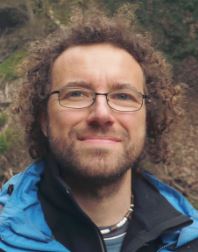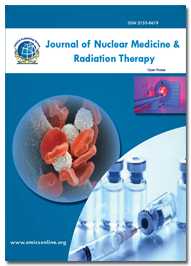Theme: Discovering the new possibilities and diversfied applications on Medical Physics
Renowned Speakers
Medical Physics-2015
OMICS International proudly announces the commencement of its “International Conference on Medical Physics” which is going to be held during August 03-05, 2015 at Birmingham, UK. The conference highlights the theme “Discovering the new possibilities and diversified applications of Medical Physics”. The event offers a best platform with its well organized scientific program to the audience which includes interactive panel discussions, keynote lectures, plenary talks and poster sessions on the topics healthcare ,radiation oncology, medical imaging, neurophysiology ,audiology, biomedical physics, Nano medicine, diagnosis and treatment of cancer as well as the recent advancements and upcoming challenges in the respective field. The conference invites Medical Physicist, neurophysiologists, Academicians, Clinicians, Researchers, Physical therapists, Health care professionals, students, business delegates and Young researchers across the globe providing a better podium, interconnecting the latest research, technological developments in the arena as well as therapeutic aspects. Participating at Medical Physics International conference will be an excellent opportunity to meet eminent personalities and learn about the latest technological advancements.
OMICS International organizes 300+ Conferences Every Year across USA, Europe & Asia with support from 1000 more scientific societies and Publishes 400+ Open access journals which contains over 30000 eminent personalities, reputed scientists as editorial board members.
For more information please visit: www.conference series.com
As per the recent investigations, Radiation therapy equipment and devices have a market value of $545 million worldwide. The funding allotted for research purpose across the globe in Medical Physics field is around $ 560,000. Cancer and neurophysiological problems are among the most frequent reasons for medical consultation, accounting for more than 8.2 million deaths per year. One in four people in the USA suffer from cancer, which brings the annual cost of cancer disorders in the US to $ $216.6 billion. Realizing the importance, OMICS International is organizing Medical Physics conference in Birmingham, UK this year paving way for sharing views and research, which will help the scientific world to adopt solutions for the problems of critical importance.
Latest Imaging Techniques is the method and process of creating visual pictures of the interior of a body for clinical analysis and medical diagnostics. X-ray imaging is the image produced by electromagnetic radiation. They collide with the matter or substance through photo absorption, Compton scattering, and Rayleigh scattering. The collision of x-rays is with the organic matter or any other substance in different ways depending on their sensitivity. This is why the actual risk to the body from X-ray procedures varies depending on the part of the body being X-rayed. Medical imaging is the technique and process of creating pictures of internal body for clinical analysis and medical inspection. By using this technique we can find the organs present beneath the skin and bones, so that we can diagnose the disease and treat easily. Magnetic resonance imaging (MRI) is the technique of radiology through this technique we can detect the anatomy and physiology of the body includes internal organs. The magnetic field used in the MRI is very high. Optical imaging is a technique is the process through which we can detect the anatomy and physiology of ligaments, joints, muscles, joints, vessels.
Radiation Oncology is also called radio therapy it is the technique in which we use high-energy radiation to remove or kill the tumors and cancer cells. They kill the cancer cell by damaging the genetic material inside the cancer cell. It leads to death of the cancer cell. Radiation biology is also called as radiobiology.it is one of the fields of Medical Science. Radiobiology is the study of ionizing radiation on the living organisms. Radiotherapy is the process treatment of cancer cells using high energy radiation. The amount of ionizing radiation should be calculated carefully. The impacts of radiation therapy involves in chest is difficulty swallowing, shortness of breath, breast or nipple soreness, and shoulder stiffness.in case of stomach Side effects from radiation therapy is abdomen may include nausea, vomiting, or diarrhea. In head and neck the side effects may include dry mouth, difficulty swallowing, mouth and gum sores, stiffness in the jaw, nausea. Treatment approaches by using Biological therapy involves the use of living organisms, substances derived from living organisms, or laboratory-produced versions of such substances to treat disease. Some biological therapies for cancer use vaccines or bacteria to stimulate the body’s immune system to act against cancer cells.
New Technologies In Cancer Treatment
Various methods are involved in the treatment of cancer. Some of New Technologies in Cancer Treatment are Chemotherapy is the method in this we use chemicals or drugs to kill cancer cells. However, when most people are using chemotherapy. The drugs using in this method are having the ability to kill the cells and stopping their ability to grow and divide. Immunotherapy is one of the technique.it is also called biologic therapy or biotherapy.it is a type of cancer treatment designed to develop the body's natural defenses to fight the cancer. It uses materials either made by the body or in a laboratory to improve, target, or restore immune system function by developing antigens. Intensity-modulated radiation therapy (IMRT) is an advanced mode of high-precision radiotherapy that uses computer-controlled linear accelerators to deliver precise radiation doses to a malignant tumor or specific areas within the tumor. IMRT allows for the radiation dose to conform more precisely to the three-dimensional (3-D) shape of the tumor by modulating [or] controlling the intensity of the radiation beam in multiple small volumes.
Signal Processing in Biomaterials
Digital Signal procesing is the method of transferring information contained in many different physical, symbolic, or abstract formats broadly designated as signals. Bio magnetism is the phenomenon of magnetic fields produced by living organisms it is a subset of bioelectromagnetism. An electrocardiogram is a test that checks for problems with the electrical activity of your heart. An EKG shows the heart's electrical activity as line tracings on paper. The spikes and dips in the tracings are called waves. The main applications of Digital Signal Processing are audio signal processing, audio compression, digital image processing, video compression, speech processing, speech recognition, digital communications, radar, sonar, financial signal processing, seismology and biomedicine. Specific examples are speech compression and transmission in digital mobile phones, room correction of sound in hi-fi and sound reinforcement applications, weather forecasting, economic forecasting, seismic data processing, analysis and control of industrial processes. Biomedical Signal Processing is the constantly communicating information about our health. This information can be captured through physiological instruments that measure heart rate, blood pressure, oxygen saturation levels, blood glucose, nerve conduction, brain activity.
Surgery through Image Guided therapies and their Modellings
Image-guided therapy (IGT) is the technique used to improve the localization and targeting of unvisual tissue and to monitor and control treatments. Image-guided surgery was originally developed for treatment of tumors using stereotactic surgery and radiosurgery that are guided by computed tomography (CT), magnetic resonance imaging (MRI) and positron emission tomography (PET) using a technology known as the N-localizer. Image-guided surgery has found wide application in surgery of the sinuses, where it helps to avoid damage to brain and nervous system. Endoscopy means looking inside and typically refers to looking inside the body for medical reasons using an endoscope, an instrument used to examine the interior of a hollow organ or cavity of the body. Unlike most other medical imaging devices, endoscopes are inserted directly into the organ.
A biosensor is an analytical device, used for the detection of an analyte, That combines a biological component with a physicochemical detector. Nanobiosensors are basically the sensors which are made up of nanomaterials and interestingly these are not the specialized sensors which can detect the nanoscale events and happenings. A biochip is a collection of miniaturized test sites (microarrays) arranged on a solid substrate that permits many tests to be performed at the same time in order to achieve higher throughput and speed. Hydrogel describes three-dimensional network structures obtained from a class of synthetic and/or natural polymers which can absorb and retain significant amount of water. A Body sensor network is a group of specialized transducers with a communications infrastructure that uses radio to monitor and record physical or environmental conditions.
Neural engineering is also known as Neuro engineering is a part of within biomedical engineering that uses engineering techniques to understand, repair, replace, enhance, or otherwise exploit the properties of neural systems. A brain–computer interface (BCI)is also called as mind-machine interface (MMI), direct neural interface (DNI), or brain–machine interface (BMI), is a direct communication pathway between the brain and an external device. BCIs are often directed at assisting, augmenting, or repairing human cognitive or sensory-motor functions. Neural engineering is also known as neuroengineering is a discipline within biomedical engineering that uses engineering techniques to understand, repair, replace, enhance, or otherwise exploit the properties of neural systems. Neural engineers are uniquely qualified to solve design problems at the interface of living neural tissue and non-living constructs. A neurological disorder is any disorder of the body nervous system. Structural, biochemical or electrical abnormalities in the brain, spinal cord or other nerves can result in a range of symptoms.
Bioinformatics is an interdisciplinary field that develops methods and software tools for understanding biological data. It is the combination of sciences of bioinformatics combines computer science, statistics, mathematics, and engineering to study and process biological data. Proteomics is the large-scale study of proteins, particularly their structures and functions. Computational biology involves the development and application of data-analytical and theoretical methods, mathematical modeling and computational simulation techniques to the study of biological, behavioral, and social systems. The field is broadly defined and includes foundations in computer science, applied mathematics, animation, statistics, biochemistry, chemistry, biophysics, molecular biology, genetics, genomics, ecology, evolution, anatomy, neuroscience, and visualization. A genetic algorithm (GA) is a search heuristic that mimics the process of natural selection. Systems biology is the computational and mathematical modeling of complex biological systems. An emerging engineering approach applied to biomedical and biological scientific research, systems biology is a biology-based inter-disciplinary field of study that focuses on complex interactions within biological systems, using a holistic approach to biological and biomedical research. Genome projects are scientific endeavors that ultimately aim to determine the complete genome sequence of an organism and to annotate protein-coding genes and other important genome-encoded features.
Biophysics is an interdisciplinary science using methods of, and theories from, physics to study biological systems. Biophysical research shares significant overlap with biochemistry, nanotechnology, bioengineering, computational biology systems biology. It has been suggested as a bridge between biology and physics. The physics of cancer the investigation of changes in physical properties of cells during malignant transformation is an emerging field in cancer research and cell biology. Transport and Physiological modeling based pharmacokinetic (PBPK) properties are the mathematical modeling technique for predicting the absorption, distribution, metabolism and excretion (ADME) of synthetic or natural chemical substances in humans and other animal species. Radiobiological models that estimate tumor local control probability (TCP) and normal tissue complication probability (NTCP) are used to evaluate and compare radiotherapy treatment plans. Biological Effects of Ionizing and non-ionizing Radiation from the time that radioactivity was discovered, it was obvious that it caused damage. The magnitude of the difference between the biological effects of non-ionizing radiation, such as light and microwaves, and ionizing radiation, such as high-energy ultraviolet radiation, x-rays, gamma-rays. Hemodynamics (AmE) or hæmodynamics (BrE), meaning literally "blood flow, motion and equilibrium under the action of external forces", is the study of blood flow or the circulation. It explains the physical laws that govern the flow of blood in the blood vessels.
Clinical Physics and Patient Safety
Clinical physics and patient therapy includes the Developing of equipment specifications for radiation therapy treatment, brachytherapy, simulation, and radiation measurement Develop of procedures for the initial and continuing evaluation of radiation therapy treatment, brachytherapy, simulation, and radiation measurement equipment. Usability and human factors engineering for medical device and system design manufactured today require significant attention to safety and human factors engineering that has not always been exercised in medical device design. Patient safety, medical errors and adverse events prevention related to health technologies Applying human factors engineering to medical device development helps to ensure a product’s safety and usability. Ultimately, manufacturers must verify that the product meets users’ needs and validate that users can safely and effectively use the product in the intended use environments. Patient safety is a new healthcare discipline that emphasizes the reporting, analysis, and prevention of medical error that often leads to adverse healthcare events. Telemedicine in developing countries, a broad umbrella term for delivery of medical care at a distance, has reached around the world, and now health professionals can communicate faster, more widely, and more directly with clients and colleagues, no matter where they are Telemedicine may in fact have a more profound impact on developing countries than on developed ones. Clinical engineering is at a strategic inflection point. Technical, economic, regulatory, and cultural dynamics are at work shaping the future of healthcare delivery.
Medical physics Conferences mainly focuses on latest imaging techniques. Generally imaging techniques plays an important role in the field of physics medical medical physics Latest Imaging Techniques is the method and process of creating visual pictures of the interior of a body for clinical analysis and medical diagnostics which are conducted in Medical physics Workshops. X-ray imaging is the image produced by electromagnetic radiation. They collide with the matter or substance through photo absorption, Compton scattering, and Rayleigh scattering. The collision of x-rays is with the organic matter or any other substance in different ways depending on their sensitivity. This is why the actual risk to the body from X-ray procedures varies depending on the part of the body being X-rayed in X-ray imaging Workshops. Medical imaging is the technique and process of creating pictures of internal body for clinical analysis and medical inspection. By using this technique we can find the organs present beneath the skin and bones, so that we can diagnose the disease and treat easily. Magnetic resonance imaging (MRI) is the technique of radiology through this technique we can detect the anatomy and physiology of the body includes internal organs. The magnetic field used in the MRI is very high. Optical imaging is a technique is the process through which we can detect the anatomy and physiology of ligaments, joints, muscles, joints, vessels. All these imaging techniques mentioned above are comes under the techniques of medical physics imaging
Radiation Oncology is also called radio therapy it is the technique in which we use high-energy radiation is used to remove or kill the tumors and cancer cells. They kill the cancer cell by damaging the genetic material inside the cancer cell. It leads to death of the cancer cell. This kind operations we conducted in Radio biological modelling Workshops. Radiation biology is also called as radiobiology.it is one of the fields of Medical Science. Radiobiology is the study of ionizing radiation on the living organisms. Radiotherapy is the process treatment of cancer cells using high energy radiation. The amount of ionizing radiation should be calculated carefully. The impacts of radiation therapy involves in chest is difficulty swallowing, shortness of breath, breast or nipple soreness, and shoulder stiffness.in case of stomach Side effects from radiation therapy is abdomen may include nausea, vomiting, or diarrhea. In head and neck the side effects may include dry mouth, difficulty swallowing, mouth and gum sores, stiffness in the jaw, nausea. Treatment approaches by using Biological therapy involves the use of living organisms, substances derived from living organisms, or laboratory-produced versions of such substances to treat disease. Some biological therapies for cancer use vaccines or bacteria to stimulate the body’s immune system to act against cancer cells. radiotherapy Conferences are very useful to discuss the effect of radiation on cancer treatment.
Various methods are involved in the treatment of cancer which comes under the medical physics services. Up on research in medical physics evolves Some of New Technologies in Cancer Treatment which are Chemotherapy is the method in this we use chemicals or drugs to kill cancer cells. Most of the people are using chemotherapy. The drugs using in this method are having the ability to kill the cells and stopping their ability to grow and divide. Immunotherapy is one of the technique.it is also called biologic therapy or biotherapy.it is a type of cancer treatment designed to develop the body's natural defenses to fight the cancer. It uses materials either made by the body or in a laboratory to improve, target, or restore immune system function by developing antigens. Intensity-modulated radiation therapy (IMRT) is an advanced mode of high-precision radiotherapy that uses computer-controlled linear accelerators to deliver precise radiation doses to a malignant tumor or specific areas within the tumor. IMRT allows for the radiation dose to conform more precisely to the three-dimensional (3-D) shape of the tumor by modulating [or] controlling the intensity of the radiation beam in multiple small volumes.
Digital Signal procesing is the method of transferring information contained in many different physical, symbolic, or abstract formats broadly designated as signals. Bio magnetism is the phenomenon of magnetic fields produced by living organisms it is a subset of bioelectromagnetism. An electrocardiogram is a test that checks for problems with the electrical activity of your heart. An EKG shows the heart's electrical activity as line tracings on paper. The spikes and dips in the tracings are called waves. The main applications of Digital Signal Processing are audio signal processing, audio compression, digital image processing, video compression, speech processing, speech recognition, digital communications, radar, sonar, financial signal processing, seismology and biomedicine. Specific examples are speech compression and transmission in digital mobile phones, room correction of sound in hi-fi and sound reinforcement applications, weather forecasting, economic forecasting, seismic data processing, analysis and control of industrial processes. Biomedical Signal Processing is the constantly communicating information about our health. This information can be captured through physiological instruments that measure heart rate, blood pressure, oxygen saturation levels, blood glucose, nerve conduction, brain activity.
Image-guided therapy (IGT) is the technique used to improve the localization and targeting of un visual tissue and to monitor and control treatments. Image-guided surgery was originally developed for treatment of tumors using stereotactic surgery and radiosurgery that are guided by computed tomography (CT), magnetic resonance imaging (MRI) and positron emission tomography (PET) using a technology known as the N-localizer. Image-guided surgery has found wide application in surgery of the sinuses, where it helps to avoid damage to brain and nervous system. Endoscopy means looking inside and typically refers to looking inside the body for medical reasons using an endoscope, an instrument used to examine the interior of a hollow organ or cavity of the body. Unlike most other medical imaging devices, endoscopes are inserted directly into the organ.
A biosensor is an analytical device, used for the detection of an analyte, that combines a biological component with a physicochemical detector which are conducted in Body sensor networks events. Nanobiosensors are basically the sensors which are made up of Nano materials and interestingly these are not the specialized sensors which can detect the Nano scale events and happenings. A biochip is a collection of miniaturized test sites (microarrays) arranged on a solid substrate that permits many tests to be performed at the same time in order to achieve higher throughput and speed. Hydrogel describes three-dimensional network structures obtained from a class of synthetic and/or natural polymers which can absorb and retain significant amount of water. A Body sensor network is a group of specialized transducers with a communications infrastructure that uses radio to monitor and record physical or environmental conditions.
Neural engineering is also known as Neuro engineering is a part of within biomedical engineering that uses engineering techniques to understand, repair, replace, enhance, or otherwise exploit the properties of neural systems. A brain–computer interface (BCI)is also called as mind-machine interface (MMI), direct neural interface (DNI), or brain–machine interface (BMI), is a direct communication pathway between the brain and an external device. BCIs are often directed at assisting, augmenting, or repairing human cognitive or sensory-motor functions. Neural engineering is also known as Neuro engineering is a discipline within biomedical engineering that uses engineering techniques to understand, repair, replace, enhance, or otherwise exploit the properties of neural systems. In Neuro Engineering Meetings Neural engineers are uniquely qualified to solve design problems at the interface of living neural tissue and non-living constructs. A neurological disorder is any disorder of the body nervous system. Structural, biochemical or electrical abnormalities in the brain, spinal cord or other nerves can result in a range of symptoms.
Bioinformatics is an interdisciplinary field that develops methods and software tools for understanding biological data. It is the combination of sciences of bioinformatics combines computer science, statistics, mathematics, and engineering to study and process biological data. Proteomics is the large-scale study of proteins, particularly their structures and functions. Computational biology involves the development and application of data-analytical and theoretical methods, mathematical modeling and computational simulation techniques to the study of biological, behavioral, and social systems. The field is broadly defined and includes foundations in computer science, applied mathematics, animation, statistics, biochemistry, chemistry, biophysics, molecular biology, genetics, genomics, ecology, evolution, anatomy, neuroscience, and visualization. A genetic algorithm (GA) is a search heuristic that mimics the process of natural selection. Systems biology is the computational and mathematical modeling of complex biological systems. An emerging engineering approach applied to biomedical and biological scientific research, systems biology is a biology-based inter-disciplinary field of study that focuses on complex interactions within biological systems, using a holistic approach to biological and biomedical research. Genome projects are scientific endeavors that ultimately aim to determine the complete genome sequence of an organism and to annotate protein-coding genes and other important genome-encoded features.
Biophysics is an interdisciplinary science using methods of, and theories from, physics to study biological systems. Biophysical research shares significant overlap with biochemistry, nanotechnology, bioengineering, computational biology systems biology. It has been suggested as a bridge between biology and physics. The physics of cancer the investigation of changes in physical properties of cells during malignant transformation is an emerging field in cancer research and cell biology. Transport and Physiological modeling based pharmacokinetic (PBPK) properties are the mathematical modeling technique for predicting the absorption, distribution, metabolism and excretion (ADME) of synthetic or natural chemical substances in humans and other animal species. Radiobiological models that estimate tumor local control probability (TCP) and normal tissue complication probability (NTCP) are used to evaluate and compare radiotherapy treatment plans. Biological Effects of Ionizing and non-ionizing Radiation from the time that radioactivity was discovered, it was obvious that it caused damage. The magnitude of the difference between the biological effects of non-ionizing radiation, such as light and microwaves, and ionizing radiation, such as high-energy ultraviolet radiation, x-rays, gamma-rays. Hemodynamics (AmE) or hemodynamics (BrE), meaning literally "blood flow, motion and equilibrium under the action of external forces", is the study of blood flow or the circulation. It explains the physical laws that govern the flow of blood in the blood vessels and these are conducted in Hemodynamics Workshops
Clinical physics and patient therapy includes the Developing of equipment specifications for radiation therapy treatment, brachytherapy, simulation, and radiation measurement Develop of procedures for the initial and continuing evaluation of radiation therapy treatment, brachytherapy, simulation, and radiation measurement equipment. Usability and human factors engineering for medical device and system design manufactured today require significant attention to safety and human factors engineering that has not always been exercised in medical device design. Patient safety, medical errors and adverse events prevention related to health technologies Applying human factors engineering to medical device development helps to ensure a product’s safety and usability. Ultimately, manufacturers must verify that the product meets users’ needs and validate that users can safely and effectively use the product in the intended use environments. Patient safety is a new healthcare discipline that emphasizes the reporting, analysis, and prevention of medical error that often leads to adverse healthcare events. Telemedicine in developing countries, optoacoustic tomography are the terms for delivery of medical care at a distance, has reached around the world, and now health professionals can communicate faster, more widely, and more directly with clients and colleagues, no matter where they are Telemedicine may in fact have a more profound impact on developing countries than on developed ones. Clinical engineering is at a strategic inflection point. Technical, economic, regulatory, and cultural dynamics are at work shaping the future of healthcare delivery.
For more details please visit at:medicalphysics@conferenceseries.com
Conference Highlights
- Latest Imaging Techniques
- Radiation Oncology
- New Technologies In Cancer Treatment
- Signal Processing in Biomaterials
- Surgery Through Image Guided Therapies and their Modellings
- Biosensor
- Neuro Engineering
- Bioinformatics
- Biophysics and Modelling
- Clinical Physics and Patient Saftey
- Biomedical Engineering
To share your views and research, please click here to register for the Conference.
To Collaborate Scientific Professionals around the World
| Conference Date | August 03-05, 2015 | ||
| Sponsors & Exhibitors |
|
||
| Speaker Opportunity Closed | Day 1 | Day 2 | Day 3 |
| Poster Opportunity Closed | Click Here to View | ||
Useful Links
Special Issues
All accepted abstracts will be published in respective Our International Journals.
- Nuclear Medicine & Radiation Therapy
- Medical Diagnostic Methods
- International Journal of Clinical & Medical Imaging
Abstracts will be provided with Digital Object Identifier by













